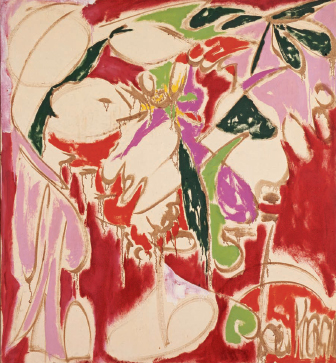Lee Krasner (47 page)
Authors: Gail Levin

Forms were beginning to emerge from Krasner's thick gray foundation that had previously threatened to absorb all her imagery as she sought to escape cubism. Pollock, Miró, or cave paintings influenced this primitive figure. CR 202
Image Surfacing
, c. 1945, oil on linen, 27 x 21½ in. Pollock-Krasner Foundation, New York. Photograph courtesy of the Robert Miller Gallery.
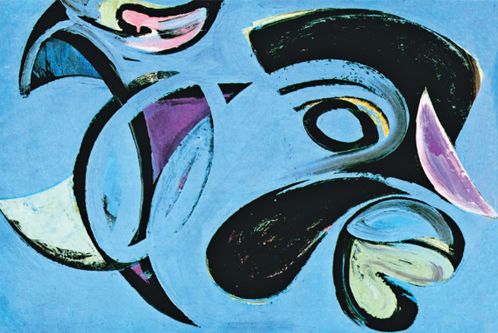
The head of a rooster suggests the sexual metaphor of the cock who would attack other roosters where his hens were nesting. Igor had returned, hoping to reclaim Krasner, but with this work, she declared that she had moved on. CR 180
Igor
, 1943, 18 x 24
7
/
8
in. Private collection.
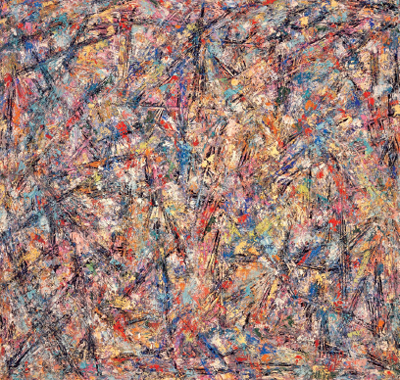
Inspired by Pollock, Krasner now worked more from instinct than she had before. She also tried to be more at one with nature and developed her own all-over patterns of strokes with her palette knife and brush handle. CR 208
Untitled
, 1946, oil on linen, 27¾ x 30¼ in. Pollock-Krasner Foundation, New York. Photograph courtesy of the Robert Miller Gallery.
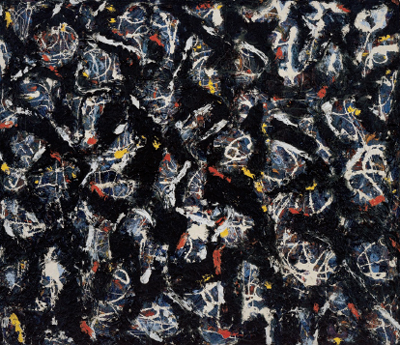
One of Krasner's “Little Image” paintings, which she said she produced horizontally and represented the only instances where she dripped paint. CR 212
Abstract No. 2
, 1946â48, oil on canvas, 20½ x 23¼ in. IVAM, Institut Valencià d'Art Modern, Generalitat, Valencia, Spain.
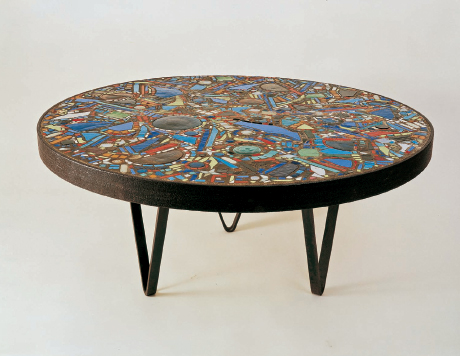
Krasner's originality led her to improvise with shells, pebbles, broken glass, keys, coins, and bits of costume jewelry. For the table's frames, Krasner used an old iron wagon wheel. CR 218
Mosaic Table
, 1947, mosaic and mixed media on wood, 46 in. diameter. Courtesy of Jason McCoy, Inc.
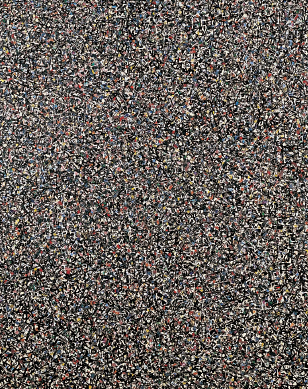
This is one of her largest “Little Image” series. It features dripped enamel paint, used by Pollock, who was inspired by the workshop of Siqueiros. CR 236
Continuum
, 1947â49, oil and enamel on canvas, 53 x 42 in. Private collection.
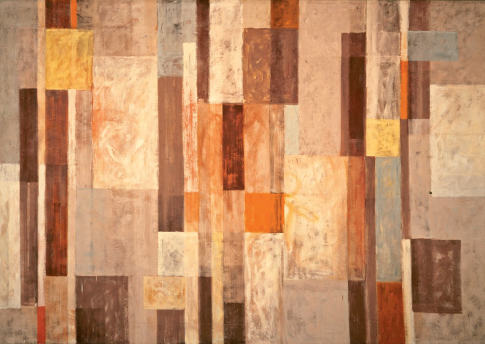
This is one of the few surviving works from Krasner's first solo show, held the same year at Betty Parson's gallery. The vibrating geometric shapes recall her admiration of Mondrian's work and her association with American Abstract Artists. CR 252
Number 2
, 1951, oil on canvas, 92½ x 132 in. Pollock-Krasner Foundation, New York. Photograph courtesy of the Robert Miller Gallery.
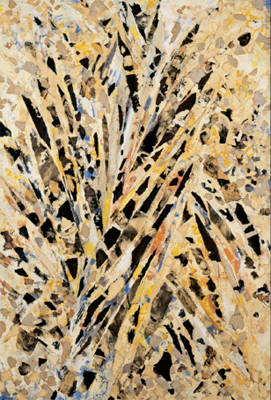
In her show at the Stable Gallery, this and other dynamic collages won Krasner praise. CR 284
Burning Candles
, 1955, oil, paper, cloth, and canvas collage on linen, 58 x 39 in. Collection of Neuberger Museum, State University of New York at Purchase; gift of Roy R. Neuberger.
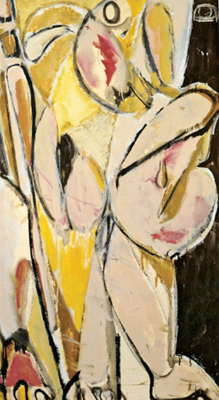
Krasner, Pollock, and others considered this painting “scary.” It remained on her easel when she left for Europe in 1956, and she later acknowledged its figurative content. CR 302
Prophecy
, 1956, oil on cotton duck, 58½ x 34 in. Private collection.
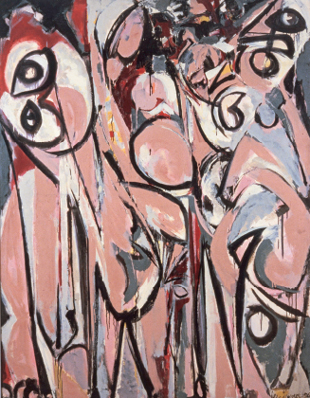
This painting, which recalls Matisse's
Bathers by a River
of 1909â1910, may refer to Pollock's earlier canvas,
Two
, of 1945. The third figure inserted between the male and female may refer to Ruth Kligman, who had intervened and threatened to split up Pollock and Krasner's relationship. CR 305
Three in Two
, 1956, oil on canvas, 75 x 58 in. Mr. and Mrs. Robert I. MacDonnell. Photograph courtesy of the Robert Miller Gallery.
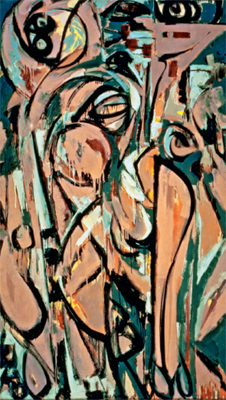
The title
Birth
echoes that of Pollock's painting, which Krasner admired in the January 1942 show at McMillan Gallery, where she too participated. Her return to this theme could suggest either her rebirth after Pollock's death or her awareness that he had longed to have a child. CR 304
Birth
, 1956, oil on canvas, 82½ x 48 in. Collection of Barbara B. Millhouse.
